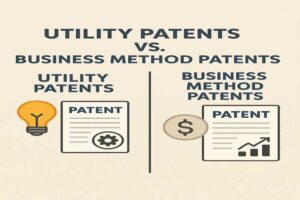Fundraising is a critical activity in the life cycle of a business. It not only provides the necessary capital to initiate operations but also supports expansion, acquisitions, and other strategic maneuvers.
The process of fundraising, however, is far from straightforward.
The duration of the fundraising process can vary dramatically depending on several factors, including the sophistication of the deal structure, the size of the offering, the complexity of the company’s financials, and current market conditions.
This article provides a comprehensive look at the fundraising process, focusing on the four primary forms of equity fundraising: Equity Private Offering, Initial Public Offering (IPO), Private Placement (or Private Investment in Public Equity, PIPE), and Secondary Public Offering.
1. Equity Private Offering
A private offering, also known as a private placement, is a sale of securities to a relatively small number of select private accredited or sophisticated pre-identified investors, as a way of raising capital. Unlike an IPO, these securities are not available to the public, but to these select investors only.
The duration of a private offering process can vary widely, typically ranging from a few weeks to several months or more:
Factors influencing this timeframe include:
- The Reputation, Press Coverage & Internet Footprint of the Company.
- The Team Of Distribution.
Are the shares distributed through professional like broker-dealers, wealth managers, venture capitalists, fund managers or by the entrepreneur, the board and the management team ?
- The Size Of The Offering.
- The Complexity Of The Company’s Financials.
- The Readiness Of The Prospective Investors.
The initial step in this process involves preparing the offering documents, including a Private Offering Memorandum (POM), which outlines the terms of the investment and provides detailed information about the company’s business and financials.
This step can take anywhere from a few weeks to several months, depending on:
- the availability of the information,
- the clarity of the corporate business plan
- the easiness of the due diligence process,
- the complexity of the company’s financials and the availability of a serious audit
Once the offering documents are prepared, the company and/or the distribution team then needs to identify and approach potential investors, which typically include venture capitalists, private equity firms, family offices, investment funds and high-net-worth individuals.
This step can also vary greatly in duration, depending on the company’s existing relationships with potential investors and the attractiveness of the offering.
2. Initial Public Offering (IPO)
An Initial Public Offering (IPO) is the process of offering shares of a private corporation to the public in a new stock issuance. An IPO allows a company to raise capital from public investors, but it comes with increased regulatory scrutiny and reporting requirements.
The timeline for an IPO can be much longer than that of a private offering, often taking between six months to a year, or even longer. This is due to several factors, including the size of the offering, the complexity of the company’s financials, the readiness of the market, and the regulatory requirements.
Before an IPO, a company must go through a rigorous audit of its financials, which can take several months. It also has to prepare a prospectus, which provides detailed information about the company’s business, financials, and the planned use of the funds raised. This prospectus is reviewed by regulators, such as the SEC in the U.S., which can take several weeks to a few months.
Once the regulatory approval is obtained, the company works with an investment bank to set the price and date for the offering. This involves a roadshow, where the company presents its business plan to potential investors. The duration of this step can vary depending on the market conditions and investor interest.
3. Private Placement or Private Investment in Public Equity (PIPE)
A Private Investment in Public Equity, often referred to as a PIPE, involves the selling of publicly traded securities privately, often to institutional investors. PIPEs are often used by companies that need to raise capital quickly and are willing to sell securities at a discount to the market price.
The duration of a PIPE deal can be relatively short, often taking just a few weeks to a couple of months. This is because PIPE deals typically bypass some of the regulatory requirements that apply to public offerings. However, the company must still negotiate the terms of the deal with the potential investors, which can be time-consuming, especially if the company’s financials are complex or if the market conditions are volatile.
The first step in a PIPE deal is to identify potential investors, which typically include institutional investors, mutual funds, and other large investment entities. The company then negotiates the terms of the deal with these investors, including the price and the size of the offering. This process can take anywhere from a few days to several weeks, depending on the complexity of the negotiations and the readiness of the investors.
Once the terms are agreed upon, the company has to prepare and file the necessary regulatory documents, which can take a few weeks. After these documents are filed and approved, the company can close the deal and receive the funds.
4. Secondary Public Offering
A secondary public offering is a sale of new shares or closely held shares of a company that is already public. Unlike an IPO, a secondary offering involves the sale of a significant number of shares that could affect the price of the stock in the market.
The duration of a secondary public offering can vary greatly, depending on the size of the offering, the complexity of the company’s financials, the market conditions, and the regulatory requirements. However, it typically takes less time than an IPO, as the company has already gone through the process of becoming a publicly traded entity.
The first step in a secondary offering involves the preparation of the offering documents, including an updated prospectus that provides current information about the company’s financials and business. This step can take anywhere from a few weeks to a couple of months, depending on the complexity of the company’s financials and the changes that have occurred since the last public offering.
Once the offering documents are prepared, the company then works with an investment bank to set the price and date for the offering. Like an IPO, this involves a roadshow to present the company’s business plan to potential investors. The duration of this step can vary depending on the market conditions and investor interest.
Finally, the company has to obtain regulatory approval for the offering, which can take several weeks to a few months. Once the approval is obtained, the company can close the deal and receive the funds.
The duration of the equity fundraising process can vary greatly depending on a number of factors, including the size of the offering, the complexity of the company’s financials, and the market conditions.
While a private offering or a PIPE deal can be completed relatively quickly under good conditions, an IPO or a secondary public offering can easily a year or more.
However, regardless of the type of offering and its duration, the company must always be prepared for the fundraising process.
This involves having a clear business plan, robust financials, and a strong management team that can effectively communicate the company’s vision and potential to potential investors.
By understanding the process and the factors that influence its duration, companies can better plan their fundraising efforts and increase their chances of success.







